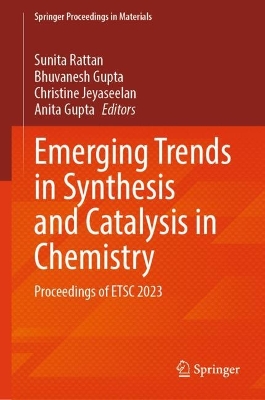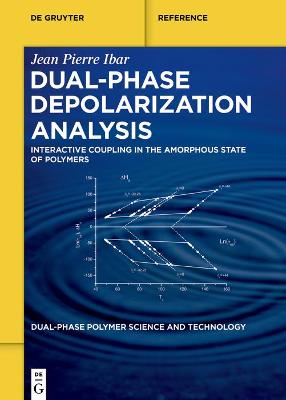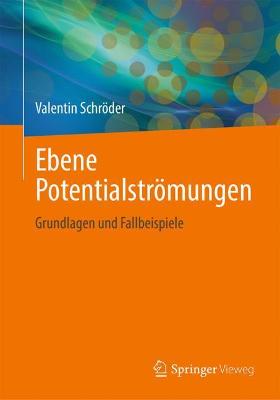Cooling Towers and Chilled Water Systems
 -10%
portes grátis
-10%
portes grátis
Cooling Towers and Chilled Water Systems
Design, Operation, and Economic Analysis
Pontes, Ricardo de Freitas Fernandes
Elsevier Science & Technology
10/2024
384
Mole
Inglês
9780323909778
Pré-lançamento - envio 15 a 20 dias após a sua edição
Descrição não disponível.
1. Introduction 1.1. Cooling requirements in industrial processes 1.2. Cooling fluids 1.2.1. Water 1.2.1.1. Cooling water 1.2.1.2. Chilled water 1.2.2. Air 1.2.3. Other fluids 1.3. Cooling equipment 1.3.1. Cooling towers 1.3.2. Chillers 1.3.3. Other equipment 1.4. Project uncertainties and operating variations 1.5. Summary 2. Cooling water systems 2.1. Cooling water circuits 2.1.1. Open water circuits 2.1.2. Semi-closed water circuits 2.1.3. Closed water circuits 2.2. Estimative for cooling water consumption 2.2.1. Heat loads 2.2.2. Approach temperature 2.2.3. Temperature range 2.2.4. Thermal energy integration 2.3. Cooling towers 2.3.1. Types of cooling towers 2.3.1.1. Natural draft cooling towers 2.3.1.2. Mechanical (forced and induced) draft cooling towers 2.3.2. Fans 2.3.3. Fills 2.3.4. Cooling water basin 2.4. Multiple cooling water systems 2.6. Cooling water pumps 2.7. Motors 2.8. Cooling water treatment systems 2.9. Summary 3. Chilled water systems 3.1. Estimative for chilled water consumption 3.1.1. Heat loads 3.1.2. Temperature range 3.2. Chillers 3.2.1. Types of chillers 3.2.1.1. Water-cooled chillers 3.2.1.2. Air-cooled chillers 3.2.2. Refrigerant fluids 3.2.3. Evaporators 3.2.4. Condensers 3.2.5. Expansion devices 3.2.6. Chilled water tanks 4. Design of cooling and chilled water systems 4.1. Integration of cooling water and chiller systems 4.2. Water distribution system 4.2.1. Piping design criteria 4.2.2. Pumping systems 4.2.3. Supply and return headers 4.2.4. Critical consumers 4.2.4.1. Consumers with high flow rate demands 4.2.4.2. Consumers with high pressure drops 4.2.4.3. Consumers with low temperature differences 4.2.4.4. Consumers with high water quality demands 4.2.5. Minimization of pumping energy consumption 4.3. Varying conditions in chemical plants 4.3.1. Batch processes 4.3.2. Process fluctuations 4.3.3. Varying weather 4.4. Design turndown 4.4.1. Estimation of minimum, operating, maximum and design capacities 3.4.1.1. Project uncertainties and overdesign factors 3.4.1.2. Future expansions of plants 4.4.2. Equipment turndown 4.4.3. Design strategies for low demands 4.4.3.1. On/off equipment strategies 4.4.3.2. Variable frequency drivers (VFDs) 4.4.3.3. By-pass and recirculation lines 4.4.4. Design strategies for peak demands 4.4.4.1. Surge reservoirs 4.4.4.2. Effects of peak demands 4.5. Design considerations for equipment maintenance 4.6. Safety, health and environmental concerns 4.7. Summary 5. Operational and control strategies 5.1. Start-up procedures 5.2. Intermittent operations 5.2.1. System lag time 5.2.2. Alternating equipment use 5.3. Extreme weather conditions 5.3.1. Operating in high temperatures 5.3.2. Operating in below freezing temperatures 5.4. Instrumentation 5.4.1. Process monitoring instrumentation 5.4.2. Process control instrumentation 5.4.3. Safety instrumentation 5.4.5. Instrumentation turndown 5.5. Control valves 5.5.1. Valve types 5.5.2. Fail positions 5.5.3. Valve turndown 5.6. Real time performance assessment 5.6.1. Equipment efficiency 5.6.2. Slack 5.6.3. Process efficiency 5.6.4. System instability 5.7. Process control 5.7.1. Supply temperature control 5.7.1.1. Fan speed control 5.7.1.2. Compressor control 5.7.1.3. By-pass control 5.7.2. Return temperature control 5.7.3. Flow rate control 5.7.4. Differential pressure control 5.7.5. Equipment preservation control 5.7.6. Safety considerations for operation 5.8. Water quality control 5.8.1. Water quality parameters 5.8.2. Air pollution concerns 5.8.3. Blowdown 5.9. Equipment maintenance 5.10. Summary 6. Economic analysis 6.1. Capital costs estimation 6.1.1. Equipment purchase costs 65.1.2. Installation costs 6.2. Operating costs 6.2.1. Energy consumption costs 6.2.2. Water treatment costs 6.2.3. Maintenance costs 6.2.4. Other operating costs 6.3. Minimization of overall costs 6.3.1. Degrees of freedom 6.3.2. Algorithms for cost minimization 6.3.3. Effect of overdesign on costs 6.4. Summary
Este título pertence ao(s) assunto(s) indicados(s). Para ver outros títulos clique no assunto desejado.
Cooling tower; chilled water system; chillers; utilities design; process design; power plant design; power generation systems; cooling; equipment selection; water pumping systems; design of cooling tower; design of cooling system; Variable Frequency Drivers; heat and mass transfer; HVAC; thermodynamics
1. Introduction 1.1. Cooling requirements in industrial processes 1.2. Cooling fluids 1.2.1. Water 1.2.1.1. Cooling water 1.2.1.2. Chilled water 1.2.2. Air 1.2.3. Other fluids 1.3. Cooling equipment 1.3.1. Cooling towers 1.3.2. Chillers 1.3.3. Other equipment 1.4. Project uncertainties and operating variations 1.5. Summary 2. Cooling water systems 2.1. Cooling water circuits 2.1.1. Open water circuits 2.1.2. Semi-closed water circuits 2.1.3. Closed water circuits 2.2. Estimative for cooling water consumption 2.2.1. Heat loads 2.2.2. Approach temperature 2.2.3. Temperature range 2.2.4. Thermal energy integration 2.3. Cooling towers 2.3.1. Types of cooling towers 2.3.1.1. Natural draft cooling towers 2.3.1.2. Mechanical (forced and induced) draft cooling towers 2.3.2. Fans 2.3.3. Fills 2.3.4. Cooling water basin 2.4. Multiple cooling water systems 2.6. Cooling water pumps 2.7. Motors 2.8. Cooling water treatment systems 2.9. Summary 3. Chilled water systems 3.1. Estimative for chilled water consumption 3.1.1. Heat loads 3.1.2. Temperature range 3.2. Chillers 3.2.1. Types of chillers 3.2.1.1. Water-cooled chillers 3.2.1.2. Air-cooled chillers 3.2.2. Refrigerant fluids 3.2.3. Evaporators 3.2.4. Condensers 3.2.5. Expansion devices 3.2.6. Chilled water tanks 4. Design of cooling and chilled water systems 4.1. Integration of cooling water and chiller systems 4.2. Water distribution system 4.2.1. Piping design criteria 4.2.2. Pumping systems 4.2.3. Supply and return headers 4.2.4. Critical consumers 4.2.4.1. Consumers with high flow rate demands 4.2.4.2. Consumers with high pressure drops 4.2.4.3. Consumers with low temperature differences 4.2.4.4. Consumers with high water quality demands 4.2.5. Minimization of pumping energy consumption 4.3. Varying conditions in chemical plants 4.3.1. Batch processes 4.3.2. Process fluctuations 4.3.3. Varying weather 4.4. Design turndown 4.4.1. Estimation of minimum, operating, maximum and design capacities 3.4.1.1. Project uncertainties and overdesign factors 3.4.1.2. Future expansions of plants 4.4.2. Equipment turndown 4.4.3. Design strategies for low demands 4.4.3.1. On/off equipment strategies 4.4.3.2. Variable frequency drivers (VFDs) 4.4.3.3. By-pass and recirculation lines 4.4.4. Design strategies for peak demands 4.4.4.1. Surge reservoirs 4.4.4.2. Effects of peak demands 4.5. Design considerations for equipment maintenance 4.6. Safety, health and environmental concerns 4.7. Summary 5. Operational and control strategies 5.1. Start-up procedures 5.2. Intermittent operations 5.2.1. System lag time 5.2.2. Alternating equipment use 5.3. Extreme weather conditions 5.3.1. Operating in high temperatures 5.3.2. Operating in below freezing temperatures 5.4. Instrumentation 5.4.1. Process monitoring instrumentation 5.4.2. Process control instrumentation 5.4.3. Safety instrumentation 5.4.5. Instrumentation turndown 5.5. Control valves 5.5.1. Valve types 5.5.2. Fail positions 5.5.3. Valve turndown 5.6. Real time performance assessment 5.6.1. Equipment efficiency 5.6.2. Slack 5.6.3. Process efficiency 5.6.4. System instability 5.7. Process control 5.7.1. Supply temperature control 5.7.1.1. Fan speed control 5.7.1.2. Compressor control 5.7.1.3. By-pass control 5.7.2. Return temperature control 5.7.3. Flow rate control 5.7.4. Differential pressure control 5.7.5. Equipment preservation control 5.7.6. Safety considerations for operation 5.8. Water quality control 5.8.1. Water quality parameters 5.8.2. Air pollution concerns 5.8.3. Blowdown 5.9. Equipment maintenance 5.10. Summary 6. Economic analysis 6.1. Capital costs estimation 6.1.1. Equipment purchase costs 65.1.2. Installation costs 6.2. Operating costs 6.2.1. Energy consumption costs 6.2.2. Water treatment costs 6.2.3. Maintenance costs 6.2.4. Other operating costs 6.3. Minimization of overall costs 6.3.1. Degrees of freedom 6.3.2. Algorithms for cost minimization 6.3.3. Effect of overdesign on costs 6.4. Summary
Este título pertence ao(s) assunto(s) indicados(s). Para ver outros títulos clique no assunto desejado.
Cooling tower; chilled water system; chillers; utilities design; process design; power plant design; power generation systems; cooling; equipment selection; water pumping systems; design of cooling tower; design of cooling system; Variable Frequency Drivers; heat and mass transfer; HVAC; thermodynamics




![[Set Green-Bond Forming Reactions, Vol 1+2]](https://images.marka.pt/api/v1/cover/book/9783110997538)


